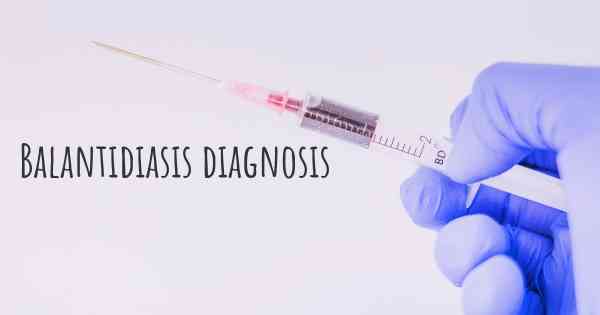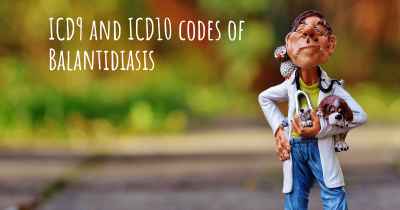4
How is Balantidiasis diagnosed?
See how Balantidiasis is diagnosed. Which specialists are essential to meet, what tests are needed and other useful information for the diagnosis of Balantidiasis

Balantidiasis is a parasitic infection caused by the protozoan parasite called Balantidium coli. It primarily affects the large intestine of humans and other animals, leading to symptoms such as diarrhea, abdominal pain, and occasionally dysentery.
Diagnosing balantidiasis involves a combination of clinical evaluation, laboratory tests, and microscopic examination of stool samples. The process typically includes the following steps:
- Clinical Evaluation: The healthcare provider will assess the patient's medical history, symptoms, and recent travel or exposure to potentially contaminated environments. This initial evaluation helps in determining the likelihood of balantidiasis and ruling out other possible causes of similar symptoms.
- Stool Sample Collection: The next step involves collecting a fresh stool sample from the patient. It is important to obtain a sufficient amount of stool for accurate testing. The sample should be collected in a clean container and delivered to the laboratory as soon as possible to ensure reliable results.
- Microscopic Examination: In the laboratory, the stool sample is examined under a microscope to identify the presence of Balantidium coli trophozoites or cysts. The technician will prepare a wet mount slide by mixing a small amount of the stool with a drop of saline or iodine solution. This allows for better visualization of the parasites.
- Stool Culture: In some cases, a stool culture may be performed to grow and isolate the Balantidium coli organism. This technique involves placing a portion of the stool sample on a special culture medium that supports the growth of the parasite. It can help confirm the diagnosis and also determine the susceptibility of the organism to specific medications.
- Other Tests: In rare instances where the diagnosis remains uncertain, additional tests such as enzyme immunoassays or polymerase chain reaction (PCR) may be employed to detect the presence of Balantidium coli DNA or antigens in the stool sample.
It is important to note that laboratory testing is crucial for accurate diagnosis as the symptoms of balantidiasis can resemble those of other gastrointestinal infections. Prompt diagnosis and appropriate treatment are essential to prevent complications and ensure a full recovery.
Diseasemaps








